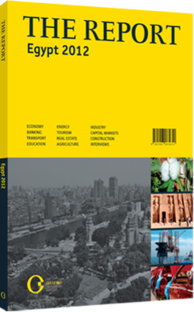The milky way: Considerable scope for increasing milk production
According to the UN’s Food and Agriculture Organisation (FAO), Egypt produced 2.9m litres of fresh cow milk worth $905m and 2.28m litres of fresh buffalo milk ($1.09bn) in 2010. Milk consumption is relatively low by North African standards, and dairy products do not feature as heavily in the Egyptian diet as they do in the Maghreb. Floris Wesseling, the managing director at Danone Egypt, estimates that demand for yoghurt, for instance, is at most 2 kg per person per year, compared to up to 15 kg in Morocco. Nonetheless, growth is rapid. According to Hatem Saleh, the former CEO of integrated dairy business at consumer foods company Gozour, the milk market is growing by 20% per year – some of that used as an ingredient in other dairy products – while supply is rising by only 10%. Much of the difference is made up through the 70,000 tonnes of milk powder imported annually. Imports of fresh, dried and condensed milk totalled $192m in 2009.
MARKET STRUCTURE: Production is currently fragmented. There are three categories of dairy producers. The majority are small family farms with two to 10 cattle, which are the major source of raw milk, that is, unprocessed and unpacked. Then there are medium-sized enterprises recognised by the Egyptian Milk Producers Association, which have automatic milking machines and cooling facilities. Wesseling estimates that there are 80-100 medium-sized milk farmers producing about 800m-1bn litres a year between them. Many of these are relatively inefficient operations and can find it harder to raise capital for investment than the large dairies. Finally there are a few big producers and processers, including Gozour’s Dina Farms brand and Juhayna, Egypt’s largest dairy firm. The long-life milk market is dominated by Juhayna, with a 50% share, while fresh milk is dominated by Dina Farms, with 60% of the market. French giant Danone entered Egypt in 2005 and has established itself as market leader in terms of sales, with a relatively upmarket line of dairy products such as yoghurts and desserts. The success of Danone and Juhayna shows the potential of Egypt’s dairy market.
INFORMAL MARKET: Around 85% of the milk sold in Egypt is loose milk, which is that sold on the street from vendors or in bags. Due to the dairy industry’s efforts to educate consumers on the risks of the loose product and the benefits of processed milk, the latter has been gaining market share. Loose milk is often not properly treated or stored, and is more prone to spoiling. Sometimes preservatives are added to prolong its life, but the chemicals themselves are unhealthy.
According to Saleh, the education campaign has been successful, but there is some way to go. He suggested that dairy safety laws should be updated and that regulatory and monitoring bodies could be consolidated. Greater support for small and medium-sized dairy producers could also help drive up standards.
OBSTACLES: Hans van der Beek, a counsellor for the Dutch Ministry of Economic Affairs, Agriculture and Innovation at the Dutch Embassy in Cairo, suggests that milk output could be raised substantially without necessarily increasing the headcount of cattle, though active policy-making and investment will be required. “There’s been no proper genetic improvement of cattle in most farms,” he said. “Milk yields could easily be increased by a genetic improvement programme. The government has to focus much more on small farmers.” Wesseling identified a number of frustrations with regulation and infrastructure. “Government has been one of Danone’s main obstacles for growth,” he told OBG. “The bureaucracy and red tape has been crippling. Power shortages, infrastructure congestion and availability of land have been other bottlenecks to growth.”
The Egyptian dairy product market is growing rapidly, and it seems that modern commercial dairies are gaining ground on the informal sector. Medium-sized local companies have the opportunity to capitalise on these trends if they invest to modernise and if regulatory oversight is improved. Given Egypt’s limited water supply and the cost of feed for cows, large increases in the national herd are unlikely in the near future, but efficiency gains could boost supply considerably.
You have reached the limit of premium articles you can view for free.
Choose from the options below to purchase print or digital editions of our Reports. You can also purchase a website subscription giving you unlimited access to all of our Reports online for 12 months.
If you have already purchased this Report or have a website subscription, please login to continue.

